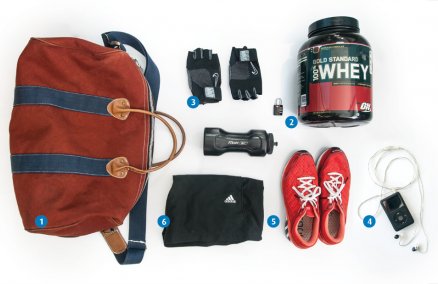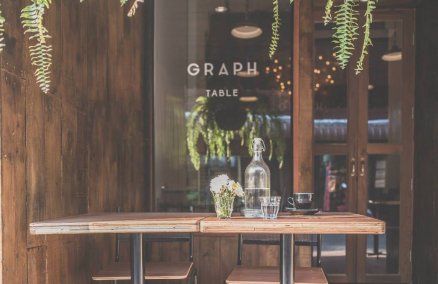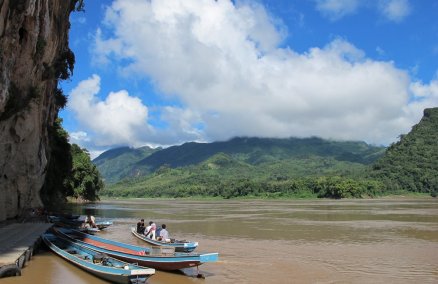Achieving peace of mind is no easy task. Much more of a journey than a destination, it involves your entire lifestyle: from the food you eat and the way you think to the friends you choose and manner in which you interact with the world. And no matter how you hope to achieve it, a key element for anyone who desires peace of mind is some form of physical exercise.
But which physical exercise to choose? The correct answer to this, undoubtedly, is whichever one you enjoy the most. Lifting weights, jogging or playing sports have their place in the life of many. What makes disciplines like yoga, Pilates and tai chi different from athletics is that they involve not only the body but, simultaneously, the mind. By coordinating movement with a meditative mental state and regulated intake of breath, participants can yield an incredibly satisfying workout, a toned body and a calm, controlled state of mind. To a lesser extent, massage (especially Thai massaage) can offer some of the same benefits as these practices, though at a less strenuous intensity.
From the East to the World
From its obscure, ancient Asian origins, yoga has evolved to become a full fleged, multi-billion dollar industry. Over the past 30 years, yoga has spread from being a uniquely Eastern phenomenon to a chic yet undeniably effective practice in the West. (Its popularity in the region will be confirmed on June 1 in Hong Kong, where the Evolution: Asia Yoga Conference will gather some of the world’s biggest commerical successes in yoga in one place.)
Bored of the Treadmill?
As many yogis will testify, regular practice not only transforms the body, but can also have a marked effect on the practictioner’s life, creating a natural inclination for a healthier lifestyle that goes beyond just exercise. The only way to see if it works for you is to give it a try.
As with any yoga class, the quality of the experience is largely determined by the quality of the teacher, how they communicate, and how you relate to that person. This is especially true for beginners. A teacher can be the difference between bliss and sweaty frustration.
Yoga Resources
Here are a few of the many places in town to get stretchy. (In addition to these yoga studios, classes are offered by multiple gyms in town—at California Wow and the Capitol Club, for example.)
Absolute Yoga Bangkok
Studio 1, 4/F Amarin Plaza, Ploenchit Rd., 02-252-4400. BTS Chit Lom. www.absoluteyogabangkok.com
With branches throughout Bangkok, Samui and Pattaya, Absolute Yoga is one of the most expansive yoga franchises in Thailand. They teach an extensive range of yoga types as well as Pilates. Discounts available for first time students.
Dance Centre
53/3 Sukhumvit Soi 33, Klongton, 02-259-8861. BTS Phrom Phong. www.dance-centre.com
The Dance Centre is a school for performing arts, teaching ballet, kung fu, tai chi and Aikido in addition to yoga. Their yoga course incorporates Hatha, Raja, Jnani and Bakti disciplines.
Iyengar Yoga Studio
3/F Fiftyfifth Plaza, 90 Thonglor, 02-714-9924. BTS Thonglor. www.iyengar-yoga-bangkok.com
Opened in 1999 by former runner Justin Herold, this studio is the first accredited center in Thailand for Iyengar Yoga.
Kundalini Yoga
www.kundaliniyogathailand.org
Yogi Bhajan, who popularized this form of yoga in the 1970s, proclaimed it so effective that one year of doing Kundalini Yoga is equal to doing 22 years of any other type. Supposedly, this is because the discipline works the glandular and nervous systems, focusing on the breathing exercises and meditation more than poses to break through emotional blocks. There is no central studio for Kundilini Yoga in Bangkok, but several teachers live here and offer classes and workshops at differing schedules and places. Visit the website above or call these teachers for more info. The first class with Susan is free.
Susan Adler Shaw
Soi Manee’s Yoga Center, Soi Jim Thompson, 089-212-1782, BTS Siam, [email protected]
Pieter
Suite 38B, Wattana Heights, 143/55 Sukhumvit Soi 19, 02-661-6597, 081-987-1435. BTS Asok.
Sheila Rank
Soi Ruam Rudee, 081-341-6418. BTS Ploenchit. [email protected]
Natural Care Therapies Research and Training
28/1 Sukhumvit Soi 36, 085-108-6401
Bita Sethi runs yoga classes at beginner, intermediate and advanced levels. She also runs a pranayama workshop, and a Therapeutic Yoga course—a one-on-one session taking into consideration the personal needs of the attendee.
Prana Yoga
117 Thonglor Soi 10, Wattana, 02-391-6487. BTS Thonglor. www.pranabangkokyoga.com
Prana Yoga is a petite studio located within the Sareerarom Spa. They teach “Power Vinyasa” yoga, which promises to leave you uplifted and energized after class, no matter what your level of practice. New students can get three classes for just B900.
Y-Fit
113/6 Thonglor, Wattana, 02-712-6111-2. BTS Thonglor. www.sunyfitwellness.com
This small studio offers a variety of classes primarily for women. Included in their roster are hot yoga, Vinyasa classes for beginner and intermediate practitioners, pre- and post-natal classes, and yoga for kids.
Yoga Elements Studio
23/F, Vanissa Building, 29 Soi Chitlom, 02-655-5671, BTS Chit Lom. www.yogaelements.com
Professional studio that teaches Ashtanga Vinyasa classes with approachable teachers, great ambience, and a friendly community. Classes are taught at various levels with easy-to-understand explanation. Hot yoga available on Thursday nights. They also host special events including visiting teacher workshops, related film screenings, discussions, and more. Yin Yoga teacher training with Victor Chng takes place May 27-29. Check web for info.
Yogasutra
32/F, Sathorn Nakorn Tower, 100/70 North Sathorn Rd., Silom, Bangrak, 02-636-6758-9, www.yogasutrathai.com
This studio teaches a combination of Hatha, Ashtanga and Sivanandha yoga, with emphasis on strength, flexibility and stamina. They also have Gentle Yoga classes, for beginners and more frail members of the community.
Pilates Resources
“In 10 sessions you will feel the difference, in 20 sessions you will see the difference, in 30 sessions you will have a whole new body…”
These are the words of Joseph Pilates, speaking of a practice he developed called Contrology, which would later more popularly take his last name. In his youth, he suffered from asthma, rickets, and rheumatic fever. On account of this, he devoted his life to the invention of a practice that alleviated the effects of his physical weakness and improved his strength by focusing on the core muscles that keep the body balanced. It is especially good for women as it targets areas that tend to be weak: abs, lower back, and butt.
Pilates consists of a low repition of highly controlled movements which enage the both the body and the mind. There are generally two types of courses: mat and equipment. Equipment uses a special machine (the Reformer) which Joseph Pilates developed, which is spring resistant in both directions of motion, and it a good program for rehabilitation. The Reformer creates strong but longer, less bulky muscles—one of the reasons Pilates has found favor in the professional dance community. Mat classes don’t use a machine, but do utilize elastic bands, fit balls, and weights.
The Pilatestudio
888/58-59 Mahatun Plaza, Ploenchit, 02-650-7797. Open Mon-Fri 8:30am-8:30pm, Sat-Sun 9:45-12:15am
The Pilatestudio is a versitile and modern studio offering mat and equipment classes, as well as pre- and post-natal sessions, Gyrotonics and Shiatsu massage. Caters to all levels, beginners to advanced, men and women.
Style Pilates Studio Bangkok
Vaneechapark (Jareemart Apartment), 39/9 Soi Lang Suan, Ploenchit. 089-521-2616 www.style-pilates.com
Pilates taught by a cured osteoparosis sufferer in a studio fully equipped for classes and workshops. Both mat and equipment classes taught here. Free introductory session.
Studio 31 Pilates & Dance Studio
289/2 Sukhumvit 31; Tel. 02 662 1833, 084 070 4060; www.pilatesanddancestudio.com
Mat and equipment classes available, with special sessions designed especially for men, and others for pregnant women. For kids—ballet, jazz and hip hop dance classes are available. Yoga for adults and children also on offer.
Tai Chi Resources
Tai Chi is a soft style martial art, where the goal is to achieve relaxed muscles and reach the best possible health through controlled breathing and “skeleton mechanics.” Its been described as “moving meditation” and the slow, repeated motion between different poses (or forms) helps increase balance and flexibility, promotes good posture, encourages blood flow, and boosts the immune system. Tai Chi also aids in lessening the effects of stress, anxiety and depression on the body by promoting inner calm. You can always go to the park and just follow along, but if you want to actually know what you’re doing, check these out.
Chen Tai Chi Thailand
4/F Piyavan Tower, 1199 Phahon- yothin Rd., 086-014-4050. BTS Ari. www.chentaichithailand.com
This is the first school in Thailand to teach Chen Tai Chi, a style which uses the skeleton to lead the body. It begins with a special Chen style warm up which refreshes the joints and relaxes the muscles. They also teach how correct breathing can help to still the mind in conjunction with the body movements. This month they also are beginning the Bad Back Club—a program that concentrates on aiding those with weak or damaged backs.
Kru Suthee Panthong
Near the bridge going onto the little island in Lumpini Park
Kru Suthee teaches Tai Chi Mon-Sat from 5:30pm onwards. Two consecutive classes each weekday. It’s free, so drop by and check it out.
Changchuntang Club
www.thaitaiji.com
Learn Yang sytle Tai Chi with the Changchuntang Club. Can be performed slow and deliberately or with great energy. They also teach various sword and blade work.
Holistic Centers
If you’re not sure where to head first, maybe this is the best option for you. More than just gyms and not quite spas, these centers provide exercise resources, therapy, counseling, detox programs and more.
Balavi Natural Health Center
191/3 Soi Ranong1, Rama 6 Rd., Samsennai, Phyathai, 02-615-8822. Open Mon-Fri 8:30am-8pm, Sat-Sun 8:30am-5pm. www.balavi.com
The center offers natural healing processes such as acupuncture, herbal medicines, crystal healing, hydro-aerobics, hydrotherapy, yoga, qigong and more. A 40-minute hydrotherapy course is B1,800.
Chirofit
8/F, Home Place Bldg., Soi Thonglor 13, 02-712-7383/-6. www.chirofitbangkok.com
An “integrated fitness center,” Chirofit covers it all with a team of medical experts on staff. Prior to your first workout, you are given a full physical examination including a fit test and posture analysis. They then prescribe an exercise regiment that you can carry out in their fully-equipped gym. In addition to cardio workouts, they also have yoga and Pilates classes on offer and a skin and beauty clinic.
The Core
31/1 Sukhumvit Soi 53, Wattana, 02-6626662, www.thecore.co.th
This wellness center is completely devoted to family fitness. Though Pilates are the main thrust for adults, it also has activities for kids (drama, yoga, tae kwon do) and a safe, educational atmosphere for babies. Fit ball, yoga, dance and discussions are also available for women and mothers-to-be.
Rasayna Retreat
57 Soi Prom-mitr, Sukhumvit Soi 39, 02-662-4803/-5. Open daily 9am-9:30pm. www.rasayanaretreat.com
This center offers detox and cleansing programs in a ranbow of shades: holistic workouts, yoga, Pilates, colonic hydrotherapy, a raw food café, consultations, naturopathy and more.
Tria Integrative Wellness
998 Rimklongsamsen Rd., 02-625-6699. www.triaintegrativewellness.com
Opening this month, Tria is a holistic health center that offers a variety of programs to serve the balance of your mind and body. There are different workouts available, including Pilates, body stretching, and yoga; as well as pampering menus which include acupuncture, massage, body wraps, and colonic hydrotherapy.
Super Spas
Alternatively, have the experts take over entirely at one of these first class spas.
HydroHealth
494 Erawan Bangkok, 4/F, Ploenchit Rd., Pathumwan, 02-250-7800. Open daily 10am-8pm, BTS Chit Lom. www.hydrohealth.co.th
Professional colonic hydrotherapy center from Hong Kong with well-trained and certified practitioners. Infrared sauna and health products are also available.
S Medical Spa
2/2 Bhakdi Bldg., Wireless Rd., 02-253-1010. Open daily 10am-8pm. BTS Ploenchit. www.smedspa.com
Staff includes certified physicians, dermatologists, gynecologists, psychiatrists and other specialists. You can have a health check by the professionals, hydrotherapy, massage, rejuvenation treatment, carboxy therapy and other services, including beauty and relaxing services.
St. Carlos Medical Spa
5/84 Moo 2, Tiwanon Rd., Pathumthani, 02-975-6700, www.stcarlos.com. Open daily 7am-9pm
You can spend one day or one week at this spa with its prime spa facilities. Here you will be helped to kill insomnia, receive special jet lag massage, phyto-aromatherapy, hydrocolonic work, laser acupuncture, pressure therapy, and oxygen therapy to give you physical and mental strength.
Yanhee Hospital
454 Charunsanitwong 90, Bangplad, 02-879-0300, www.yanhee.co.th. Open 24/7
Even though the hospital is famous for plastic surgery, they have treatments for inner beauty as well, and for affordable prices, too. Its colon detox is just B800, acupuncture is B600-700, and traditional massage is B150-175 per hour.
Spa Ten
10/F, Siam@Siam Design Hotel and Spa, 02-217-3000, www.siamatsiam.com
This spa focuses on ten treatments; Thai Massage, Thai Herbal Massage, Thai Acupressure Massage, Medicated Oil Massage, Thai Scrub, Thai Body Wrap, Thai Facial and Thai Foot Massage. Its signature treatment, Sip Massage (B1,000/60 minute), can be customized to your needs. Thai Acupressure Massage uses pressure to relieve pain to certain meridein points of the body.
Yoga Vocab
Yoga terminology is a bit confusing at first, but here’s all you really need to know.
Asanas—The actual physical postures or exercises.
Ashtanga Yoga—Form of yoga taught by K. Pattabhi Jois. Physically demanding, Ashtanga is a flowing series of specific postures that are great for building strength and flexibility.
Bikram Yoga—The original form of “hot yoga,” Bikram was named after its founder, Bikram Choudhury, who practiced a series of 26 asanas in a heated room.
Hatha Yoga—When most people talk about yoga today (outside of India), they are referring to Hatha Yoga, which comprises the physical postures (asanas), breathing exercises (pranayama), and meditation. Other than Hatha Yoga, though, there are other forms, such as the Yoga of Devotion (Bhakti), the Yoga of Rituals (Tantra), Yoga of Service (Karma) and others.
Hot Yoga—Any yoga that is performed in a heated room. This is done for two main reasons:
1. the body is more flexible at a higher temperature, therefore you can bend deeper into poses if you are hot.
2. the higher temperature brings on a higher intensity, more sweat, therefore cleansing the body…and soaking your mat. Mmm, sexy.
Kundilini Yoga—The emphasis in this type of yoga is on chanting, breathing and meditation more than on poses. Popularized by Yogi Bajan, the goal is to awaken the kundilini, an untapped source of power that rests at the base of your spine. Once awakened, the kundilini is heralded to bring on spiritual transformation.
Pranayama—Set of breathing techniques aimed at clearing energy channels and strengthening the inner lifeforce.
Iyengar Yoga—Style taught by B.K.S. Iyengar. It’s noted for focus of attention to detail and precise alignment of postures. Iyengar also popularized the use of blocks and belts in the practice.
Vinyasa Yoga—Style of yoga that flows from one pose to another with synchronized breaths. Similar to Ashtanga but less rigid in its sequence of poses.
Advertisement
























